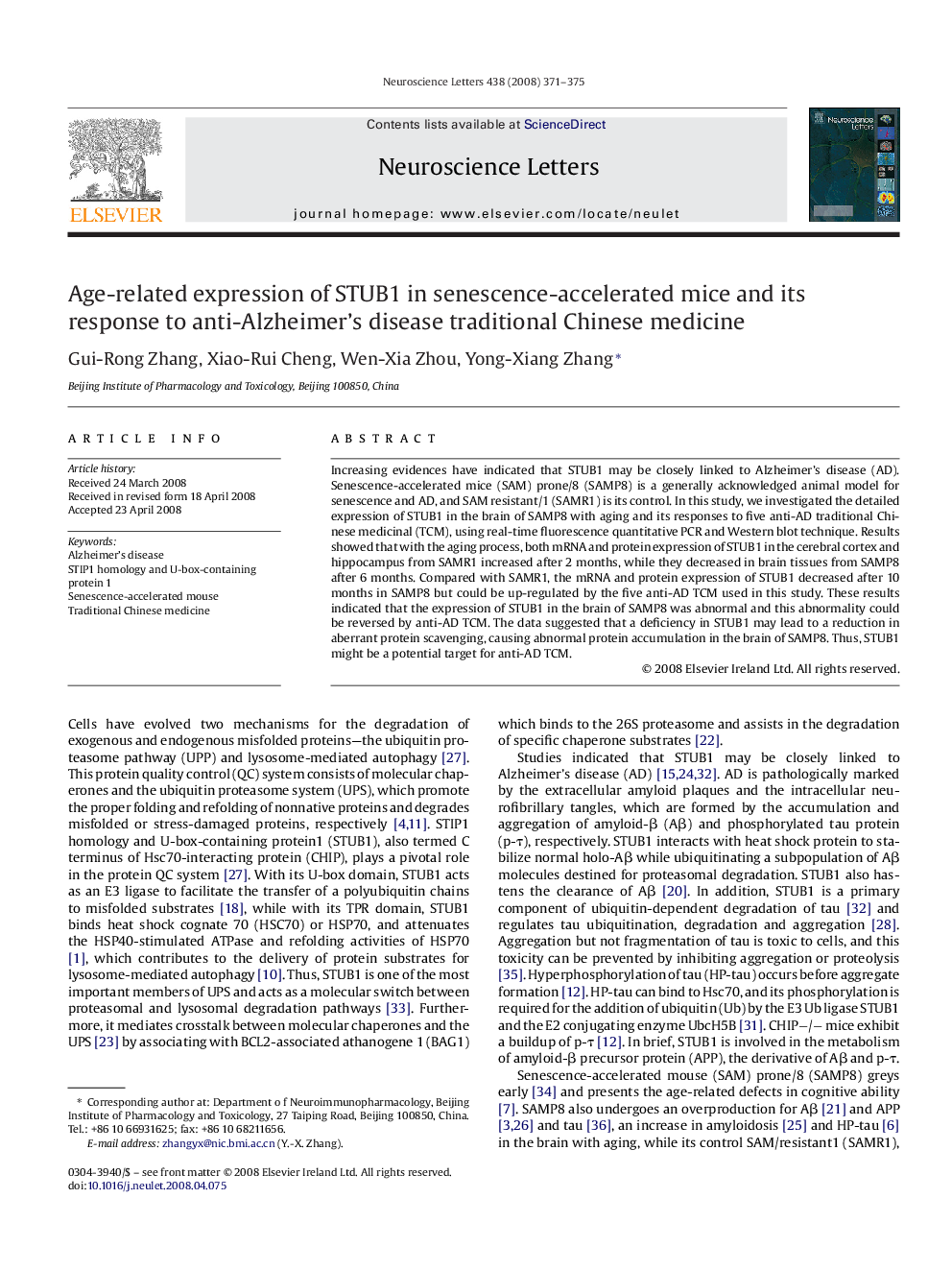| Article ID | Journal | Published Year | Pages | File Type |
|---|---|---|---|---|
| 4348151 | Neuroscience Letters | 2008 | 5 Pages |
Increasing evidences have indicated that STUB1 may be closely linked to Alzheimer's disease (AD). Senescence-accelerated mice (SAM) prone/8 (SAMP8) is a generally acknowledged animal model for senescence and AD, and SAM resistant/1 (SAMR1) is its control. In this study, we investigated the detailed expression of STUB1 in the brain of SAMP8 with aging and its responses to five anti-AD traditional Chinese medicinal (TCM), using real-time fluorescence quantitative PCR and Western blot technique. Results showed that with the aging process, both mRNA and protein expression of STUB1 in the cerebral cortex and hippocampus from SAMR1 increased after 2 months, while they decreased in brain tissues from SAMP8 after 6 months. Compared with SAMR1, the mRNA and protein expression of STUB1 decreased after 10 months in SAMP8 but could be up-regulated by the five anti-AD TCM used in this study. These results indicated that the expression of STUB1 in the brain of SAMP8 was abnormal and this abnormality could be reversed by anti-AD TCM. The data suggested that a deficiency in STUB1 may lead to a reduction in aberrant protein scavenging, causing abnormal protein accumulation in the brain of SAMP8. Thus, STUB1 might be a potential target for anti-AD TCM.
